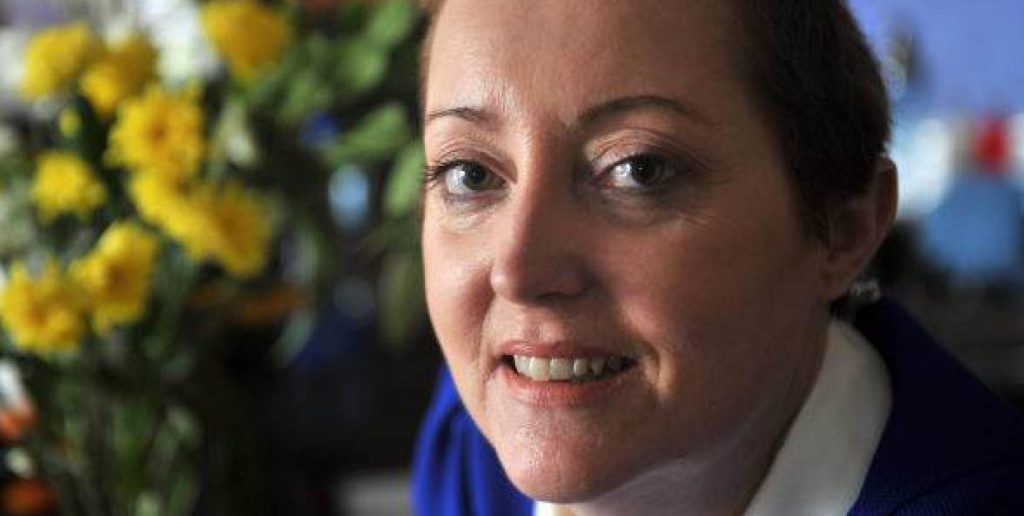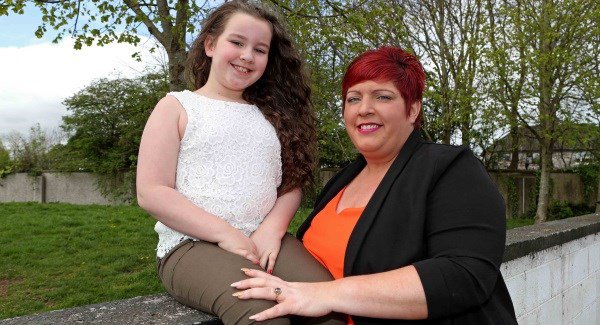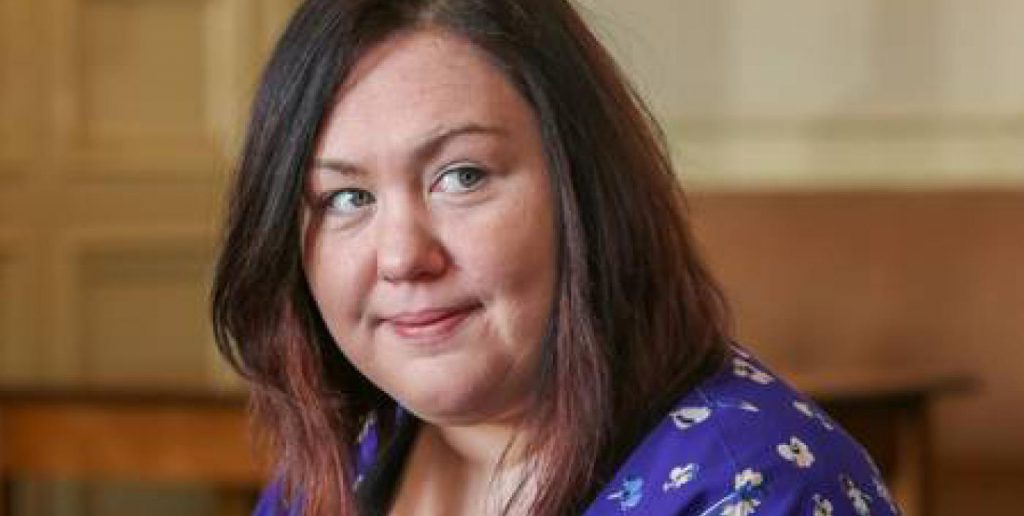2020 was the year of the staycation and 2021 may yet turn out to be the same. So while jetting away to sunnier climes is not an option right now, still spare a thought for your vulnerable skin!
Most people living in Ireland have skin type 1 or 2, which burns easily and tans poorly, so are particularly at risk from too much sun exposure. Did you know that you can get sunburnt on a cloudy day and even under the water? Or that too much sun leads to premature skin ageing, and increases skin cancer risk!
Here are a few ‘top tips’ to keep your skin in ‘tip top’ shape!
Remember A for ageing and B for burning
The sun is a source of ultraviolet (UV) radiation and there are two types we need to know about: UVA and UVB.
UVA rays penetrate more deeply through the layers of the skin than UVB. UVA is mostly involved in skin ageing while UVB is mainly responsible for sunburn. However, both types of UV are linked to the development of skin cancer.
Sunscreens act like mirrors or sponges
Sunscreens help protect our skin by filtering out the sun’s UV rays. Depending on their active ingredients, sunscreen can act like a mirror, reflecting UV radiation away from the skin (e.g. when it contains filters such as titanium dioxide or zinc oxide) or a sponge, and absorb UV radiation.
Sunscreen labelling – what to look out for
SPF stands for Sun Protection Factor and shows the degree of protection the sunscreen provides against UVB only. It is rated on a scale from 2-50+. Remember, the higher the factor, the greater the level of protection against UVB.
Protection against UVA is often indicated by a star system or a UVA logo enclosed within a circle. The higher the number of stars, the greater the level of protection.
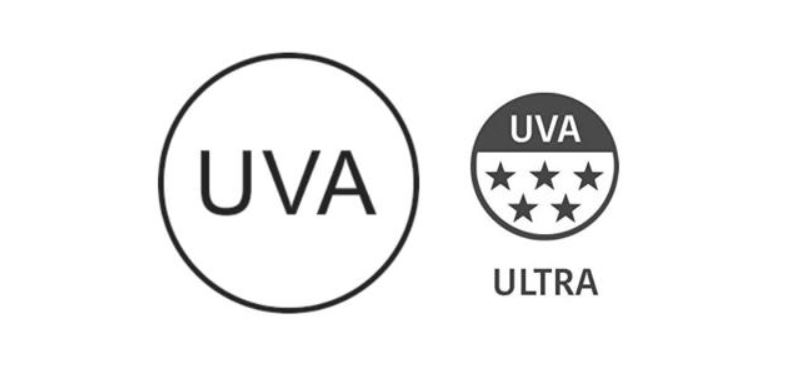
What dermatologists recommend
Choose a broad-spectrum sunscreen with an SPF of at least 30+ for adults and 50+ for children, with high UVA protection (ideally 4 or 5 stars), and water-resistant, in addition to protective clothing and shade.
Most people don’t apply sunscreen correctly – here’s how it’s done:
Correct amount: you should apply at least 1 teaspoon to each body part:
- Head/Face/Neck
- Each Arm
- Each Leg
- Your Front
- Your Back
Correct locations: don’t forget your ears, your nose, your lips (choose a broad spectrum lip balm), your neck, the tops of your feet and (if your hair is thinning) your scalp!
Correct timing: apply sunscreen at least 20-30 minutes before you go out in the sun.
Correct frequency: reapply sunscreen frequently, at least every 2 hours and after exercising, sweating, swimming, or towel drying.
Correct use: don’t be lulled into a false sense of security! No sunscreen can provide 100% UV protection. Broad-spectrum sunscreen should be used alongside other protective measure such as clothing and shade.
Know your skin type
A person’s natural skin colour influences their vulnerability to UV damage and risk of skin cancer so it’s a good idea to know your skin type, to get a better sense of the care you need to take in the sun.
Some people think a tan is healthy! NOT TRUE! A tan indicates that skin has been damaged by UV radiation, this damage is cumulative! Yes, it all adds up!
UV radiation passes through clouds, glass and water!
Just because it’s cloudy doesn’t mean you are shielded from the sun. Over 90% of UV can pass through light cloud, at half a metre depth under water UV is still 40% as intense as at the surface, and some UV can pass through glass!
No sunbaking, no sun burning
Your risk of sunburn depends on a number of factors including: your location, the time of year and time of day. Severe sunburns, especially in childhood, can lead to skin cancer, including melanoma. So remember, no sunbaking and no sun burning.
Protect your skin: Be SunSmart
UV cannot be seen or felt, so you need to defend yourself against overexposure.
Know the UV index
The UV index measures the UV radiation level at the surface of the Earth, and gives an indication of the potential for skin damage. It is calculated in a way that indicates the risk of developing sunburn, which is mainly caused by UVB.
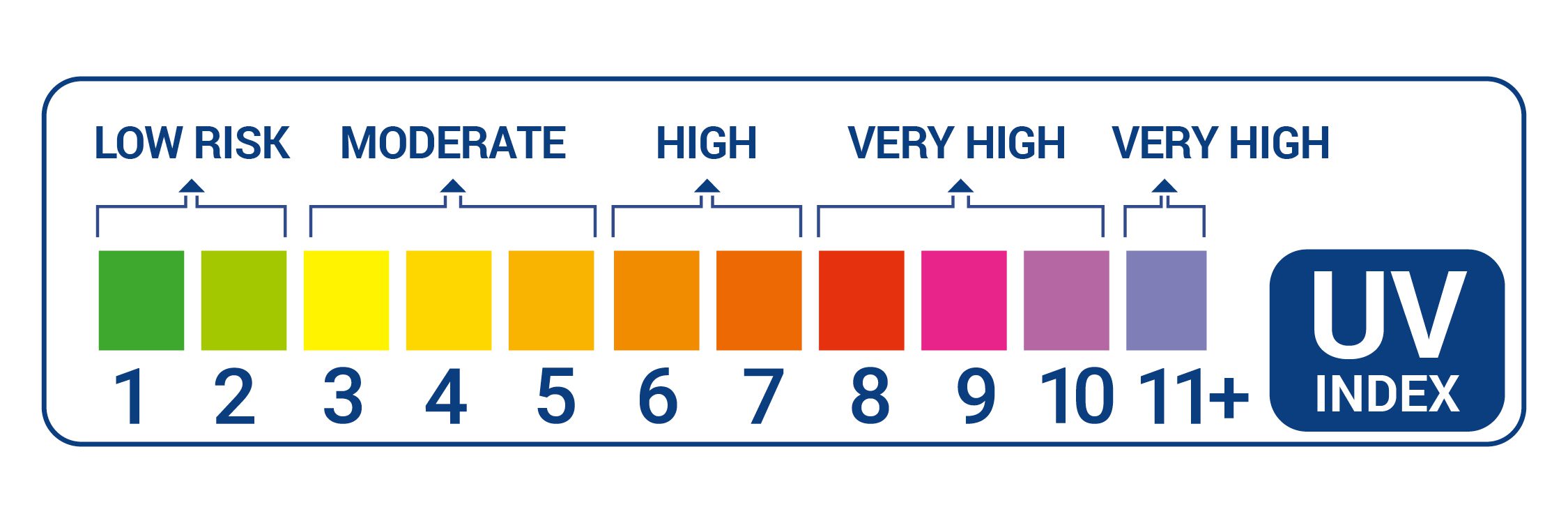
In Ireland, make sun protection part of your daily routine particularly from April-September, the intensity of sunburn producing UV is greatest, even when it is cloudy! Stay safe by limiting time in the midday sun when UV is strongest, typically between the hours of 11:00am-3:00pm.
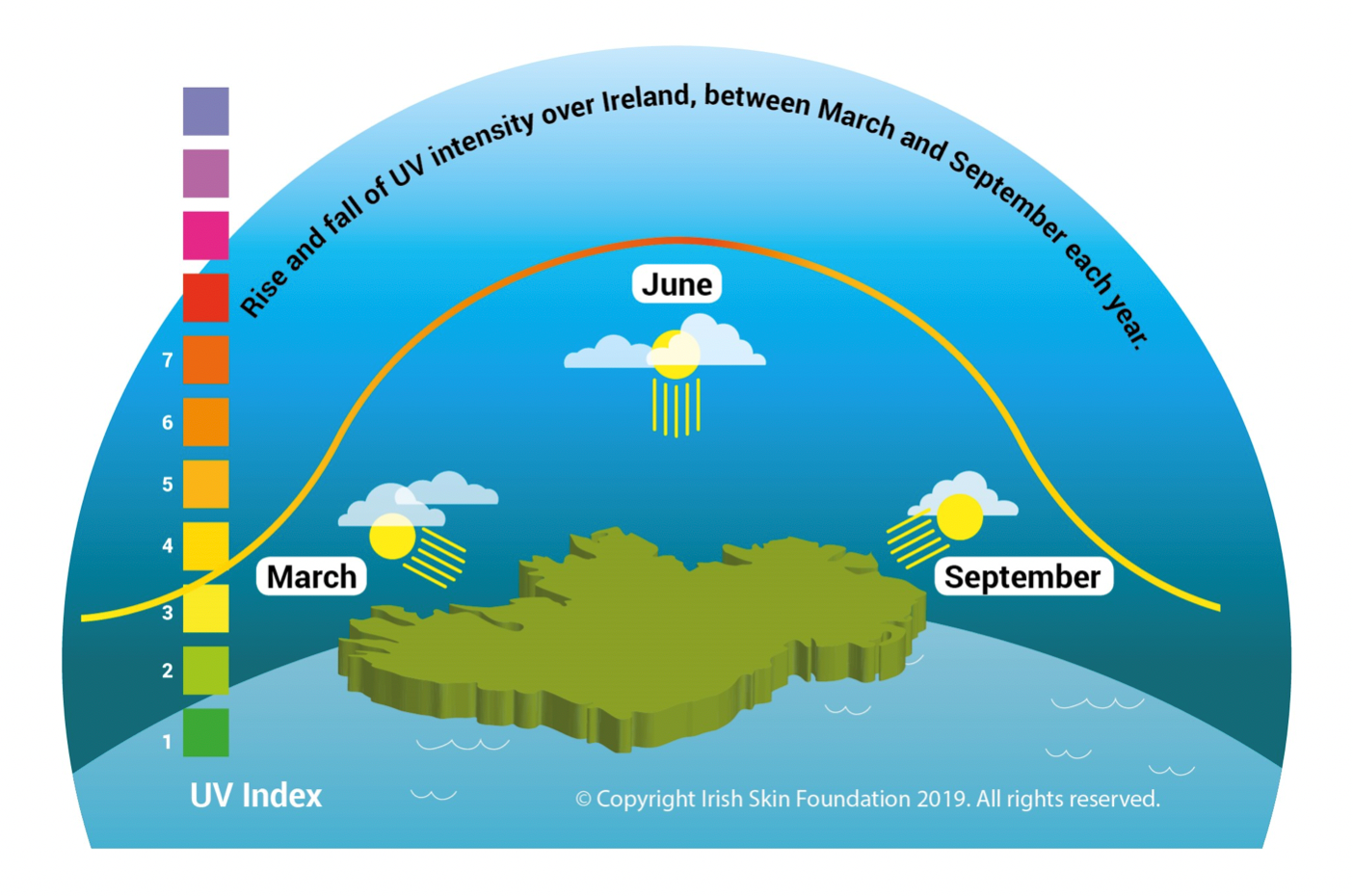
The UV index forecast for Ireland is included in Met Éireann’s regional weather forecasts from May to September but please be aware, that this can only be an average for any one day over the whole country. The clear/sunny sky peak UV index is reduced by cloud cover.
Remember the 5 ‘Ss’ of sun safety: Slip, Slop, Slap Seek, Slide
- Slip on clothing: Cover skin as much as possible e.g. wear long sleeves, collared t-shirts, clothes made from close-woven material that does not allow sunlight through.
- Slop on broad-spectrum (UVA/UVB) sunscreen with a sun protection factor (SPF) of at least 30+ for adults and 50+ for children, with high UVA protection, and water resistant. Reapply regularly.
- Slap on a hat with a wide brim: Protect your face, ears and neck.
- Seek shade: Sit in cover of trees to avoid direct sunlight and use a sunshade on your buggy or pram. Keep babies and children out of direct sunlight.
- Slide on sunglasses with UV protection. Guard your eyes from harm!
Next article: Being SunSmart: At a glance
We want everyone in Ireland to learn to Protect & Inspect their skin! Read our short guide, written with hospital-based dermatologists about protecting and checking your skin.




